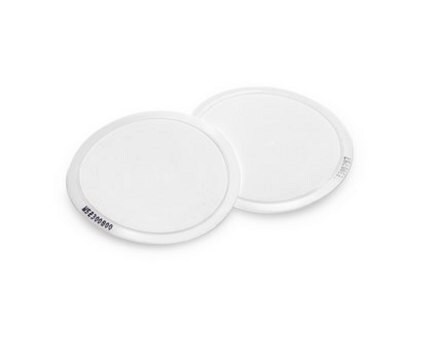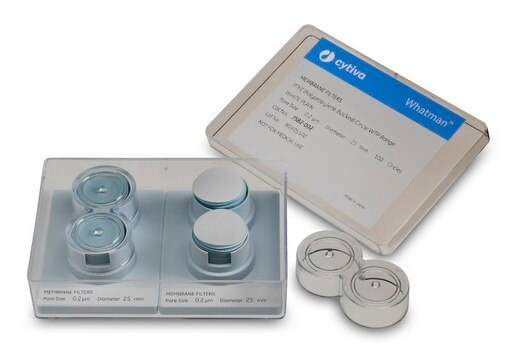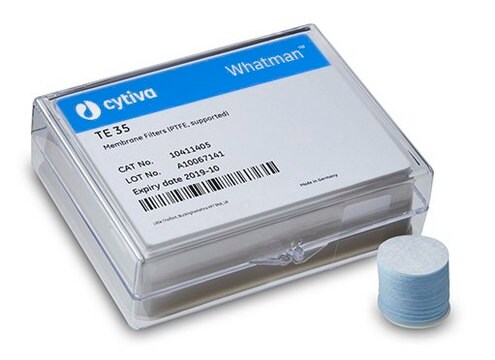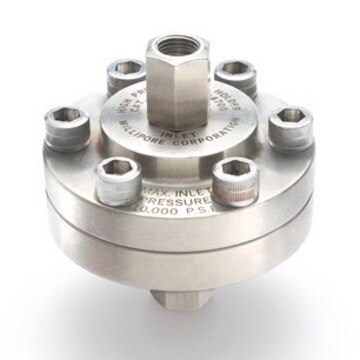FALP04700
Membrana de filtración de PTFE, tamaño de poro 1,0 μm
Fluoropore®, filter diam. 47 mm, hydrophobic
Sinónimos:
Fluoropore® Membrane Filter, Hydrophobic Polytetrafluoroethylene membrane filter discs
About This Item
Productos recomendados
material
PTFE membrane
plain filter
white filter
sterility
non-sterile
feature
hydrophobic
manufacturer/tradename
Fluoropore®
Millipore
parameter
≥150 mL/min-cm2 flow rate (27.5inHg, methanol)
≥300 mL/min-cm2 air flow rate (Gurley)
130 °C max. temp. (Curling observed at elevated temperatures)
filter diam.
47 mm
thickness
≥100 μm
gravimetric extractables
≤0.5%
matrix
Fluoropore®
pore size
1.0 μm pore size
≥65 % porosity
bubble point
≥6.5 psi (0.45 bar), air with methanol at 23 °C
shipped in
ambient
¿Está buscando productos similares? Visita Guía de comparación de productos
General description
Application
- Clarifying acids, bases, and solvents
- Filtering or venting gases
- UV spectroscopy
- Particle monitoring
- HPLC, UPLC, LC-MS/MS mobile phase filtration
- Microplastics analysis
Features and Benefits
- Fluoropore® membranes display consistency and provide broad chemical compatibility.
- Biologically and chemically inert.
- High porosity yields high flow rates.
- Available for filtration of aqueous and organic-based samples.
Legal Information
Certificados de análisis (COA)
Busque Certificados de análisis (COA) introduciendo el número de lote del producto. Los números de lote se encuentran en la etiqueta del producto después de las palabras «Lot» o «Batch»
¿Ya tiene este producto?
Encuentre la documentación para los productos que ha comprado recientemente en la Biblioteca de documentos.
Los clientes también vieron
Nuestro equipo de científicos tiene experiencia en todas las áreas de investigación: Ciencias de la vida, Ciencia de los materiales, Síntesis química, Cromatografía, Analítica y muchas otras.
Póngase en contacto con el Servicio técnico




